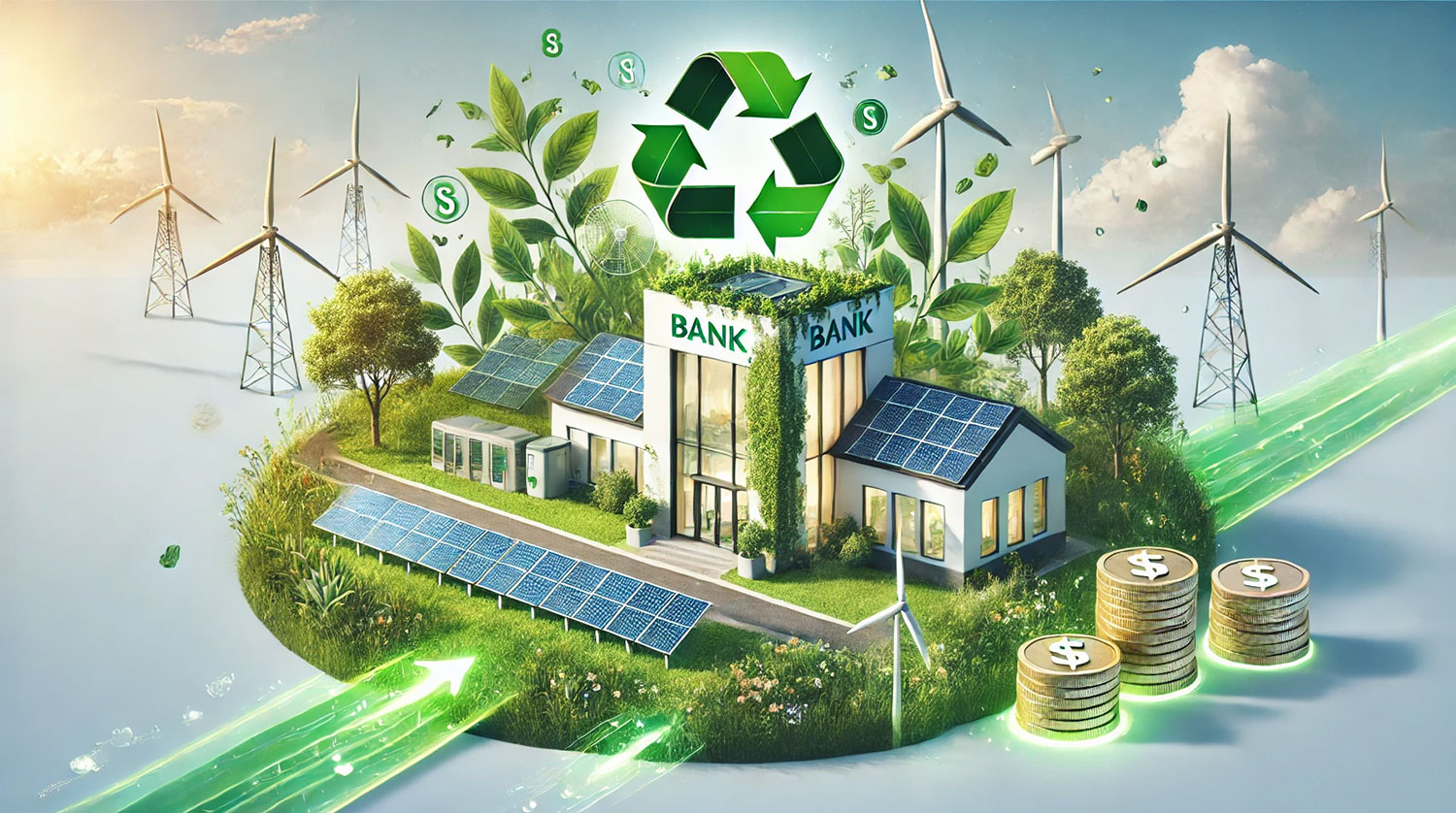
04 Feb February’s Action: Bank Green
Banking on Sustainability: Your Choice of Bank Impacts the Planet
Banks play a pivotal role in the global economy by determining where they allocate their funds. While some banks prioritize sustainability and invest in renewable energy and community-based projects, others continue to support industries that harm the environment, such as fossil fuels and deforestation.
Choosing an eco-friendly bank is a powerful way to ensure your money is contributing to positive environmental change rather than exacerbating the climate crisis.
What Makes a Bank Eco-Friendly?
Eco-friendly banks share some key characteristics:
- Renewable Energy Investment: They fund solar, wind, and other clean energy projects.
- Fossil Fuel-Free Policies: These banks avoid financing coal, oil, and gas projects.
- Sustainability Initiatives: They prioritize environmentally responsible practices, such as paperless banking and green-certified offices.
- Community-Focused Lending: Eco-friendly banks often support local economies by financing sustainable agriculture, affordable housing, and small businesses.
Why Does It Matter?
Banks that invest heavily in fossil fuels and other polluting industries are indirectly contributing to climate change. In contrast, sustainable banks drive the transition to a greener future by directing funds toward renewable energy, conservation, and innovation.
By aligning your financial choices with your values, you can amplify your impact as an advocate for the environment.
Eco-Friendly Banks: Leading the Charge
The following U.S.-based banks and credit unions are examples of financial institutions committed to sustainability:
- Amalgamated Bank
Headquartered in New York, Amalgamated Bank is a certified B Corporation with a strong focus on clean energy investments, community development, and social justice initiatives.
- Aspiration
Aspiration is a digital financial firm offering fossil fuel-free accounts and investment products. It focuses on on carbon offsets, ethical spending, and clean energy projects. Aspiration customers receive updates on the environmental impact of their transactions.
- Self-Help Credit Union
Based in North Carolina, Self-Help Credit Union supports renewable energy projects, affordable housing, and small businesses, aligning its mission with environmental and social goals.
- Beneficial State Bank
A West Coast-based bank, Beneficial State Bank prioritizes investments in renewable energy, affordable housing, and social equity projects, avoiding fossil fuel financing.
For more information on identifying green banks, visit Bank.Green This resource will guide users in choosing financial institutions that align with their environmental values.
Banks Falling Behind on Climate Action
Unfortunately, many of the largest U.S. banks continue to finance fossil fuel projects at a high rate. These institutions are some of the top contributors to the climate crisis:
- JPMorgan Chase
The largest global financier of fossil fuels, JPMorgan Chase has poured over $430 billion into oil, gas, and coal projects between 2016 and 2022. Despite climate pledges, the bank remains heavily invested in fossil fuel expansion.
- Bank of America
With over $280 billion in fossil fuel financing since 2016, Bank of America has faced criticism for continuing to fund oil and gas development, including in sensitive ecosystems.
- Wells Fargo
A significant financier of fossil fuel infrastructure, Wells Fargo has contributed nearly $270 billion to oil and gas projects, showing limited commitment to reducing its environmental impact.
- Citibank
Citi has financed over $300 billion in fossil fuel projects and continues to support controversial ventures like Arctic drilling, despite sustainability claims.
The Bigger Picture
Your choice of bank can send a strong signal to the financial industry. As more customers demand transparency and sustainability, banks are increasingly pressured to rethink their practices and shift their portfolios toward a greener future.
By banking with institutions that prioritize environmental stewardship, you can help build a financial system that supports climate action and a healthier planet.
How to Take Action
Switching to an eco-friendly bank is one of the simplest ways to align your finances with your values. Here’s how:
- Research Your Bank’s Practices: Review reports like Banking on Climate Chaos to see if your bank funds fossil fuels.
- Ask Questions: Reach out to your bank to inquire about their climate commitments and policies.
- Make the Switch: Move your accounts to eco-friendly banks or credit unions that invest in renewable energy and community-focused initiatives.
- Advocate for Change: If switching isn’t possible, use your voice to pressure your current bank toward greener policies.
By choosing eco-friendly banks, you ensure that your money supports a sustainable future rather than fueling the climate crisis.


